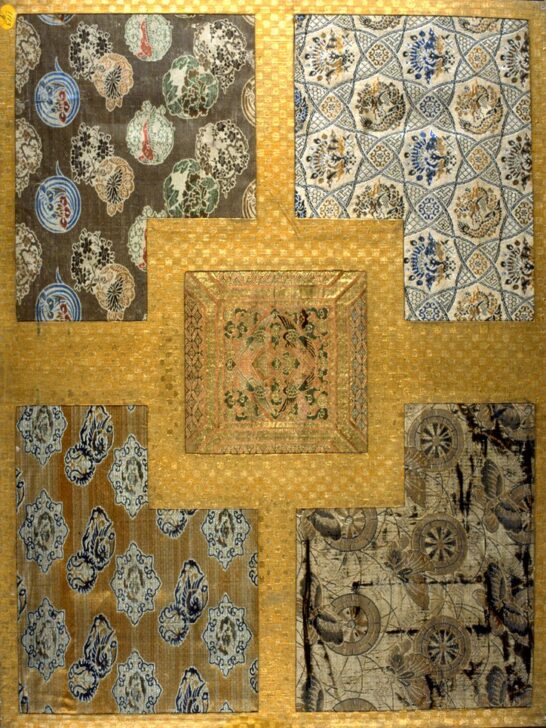One of Four Panels of Textile Fragments: Brocades in Various Traditional Pattern
Japanese

Description
Panel of textile fragments: brocades in various traditional patterns
Japan, late Meiji Period (1868–1912) to early Taishô Period (1912–1926)
Silk brocade (nishiki) and silk brocade with gilt paper (kinran)
Transfer from the College of Architecture and Design, 1972/2.44.9
Nishiki is a generic term for a multicolored patterned weave, but usually it refers specifically to twill weave created by passing color weft threads over or under two or more warp threads. According to one legend, nishiki first came to Japan in the second century from China, when the King of Wei made a gift of it to Empress Jingû. By the eighth century, Japan was able to manufacture nishiki domestically. Kinran nishiki, shown in the center of the panel, refers to brocade woven with narrow strips of gilt paper.
Subject Matter:
Nishiki is a generic term for a multicolored patterned weave, but usually it refers specifically to twill weave created by passing color weft threads over or under two or more warp threads. According to one legend, nishiki first came to Japan in the second century from China, when the King of Wei made a gift of it to Empress Jingû. By the eighth century, Japan was able to manufacture nishiki domestically. Kinran nishiki, shown in the center of the panel, refers to brocade woven with narrow strips of gilt paper.
Physical Description:
A checkered gold brocade foregrounds five fragments of textile: a square in the middle surrounded by four cornerpieces. Each textile has a different design, some with butterflies, birds, and other floral motifs.
Usage Rights:
If you are interested in using an image for a publication, please visit https://umma.umich.edu/request-image/ for more information and to fill out the online Image Rights and Reproductions Request Form.